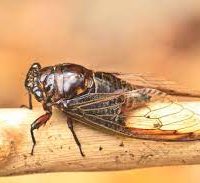
The largest brood of 17-year cicadas, known as the Great Eastern Brood, is on its way – and Hoosiers can expect to see their swarms and hear their deafening mating calls in the next few weeks.
Jerad Oren, a certified arborist with Bluestone Tree services in Bloomington, points out that cicadas don’t eat trees or their leaves when they come out of the ground – but they mate and lay their eggs in tree branches.
While many trees can withstand the crevices cicadas carve into horizontal branches, Oren says they can damage young trees.
Oren recommends draping white netting less than a quarter-inch thick over the tree’s canopy and brace the smaller or softer branches using a bamboo pole or a stick for support to keep them from breaking.




